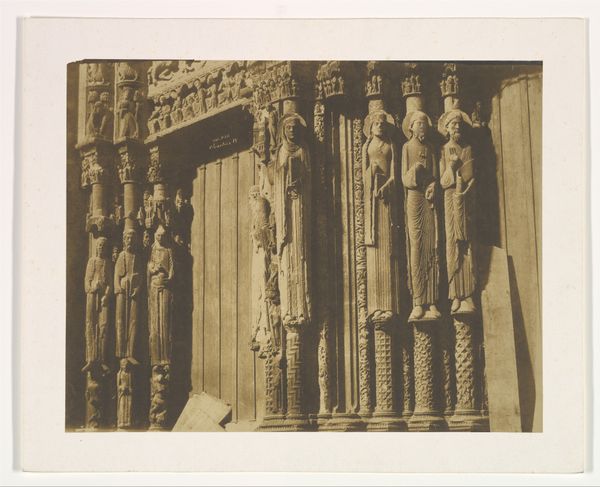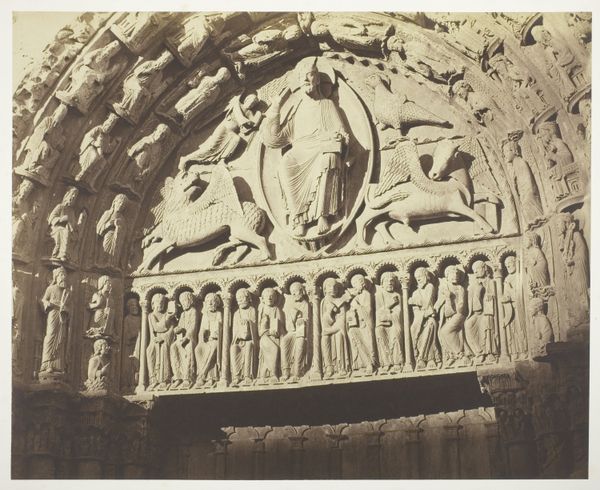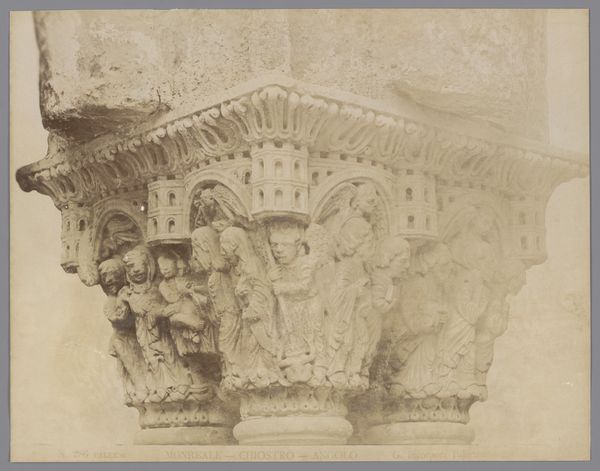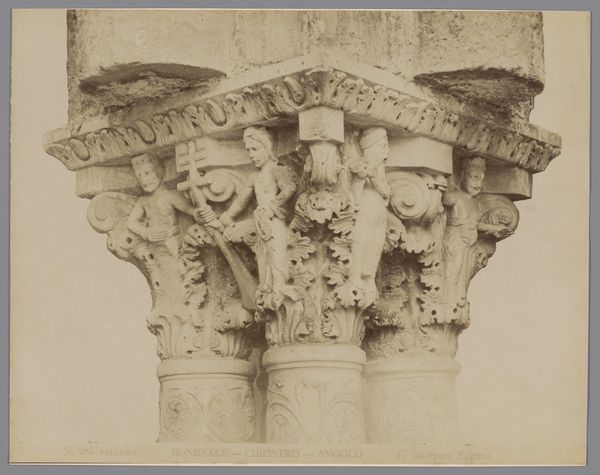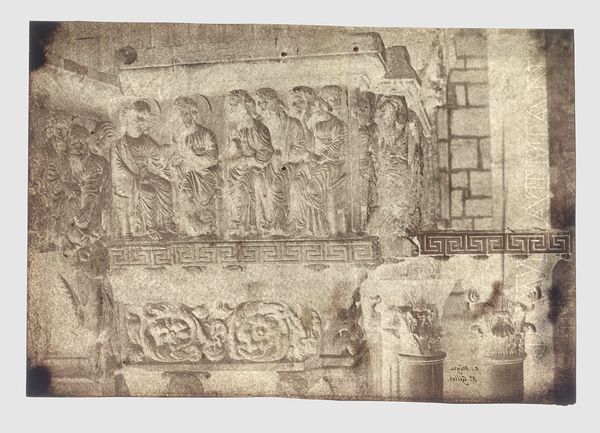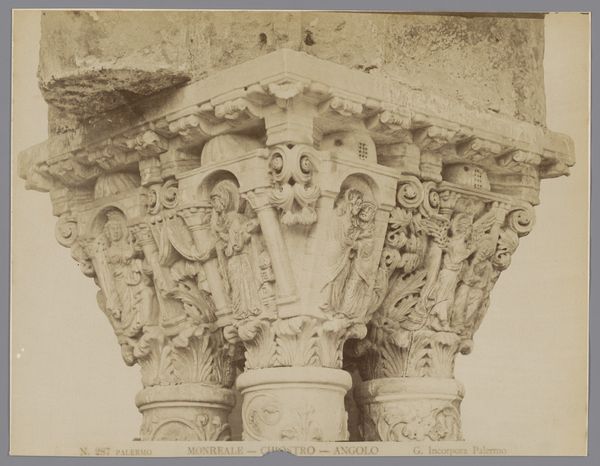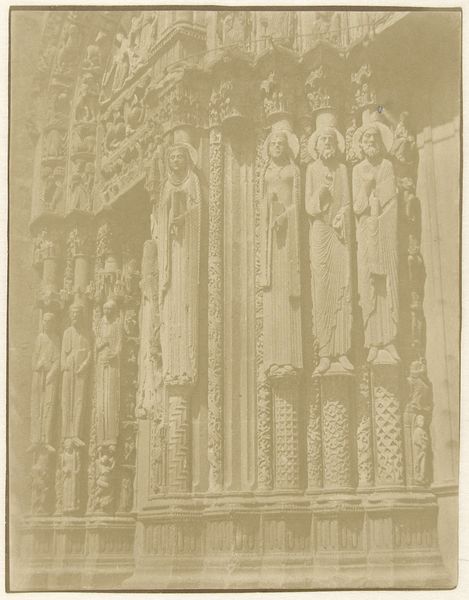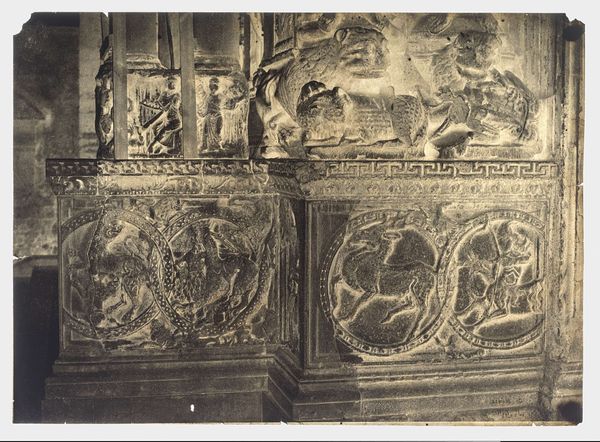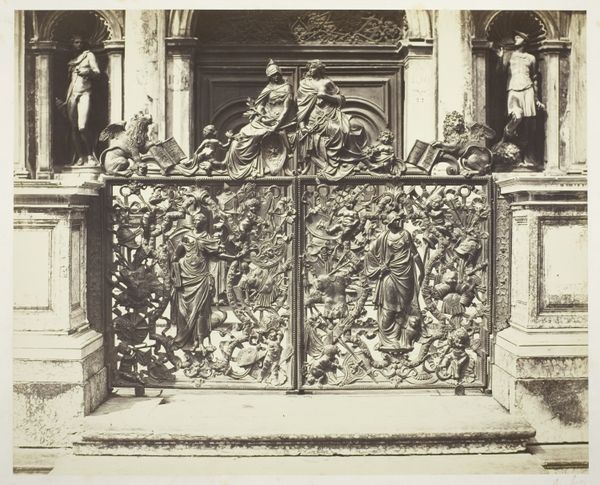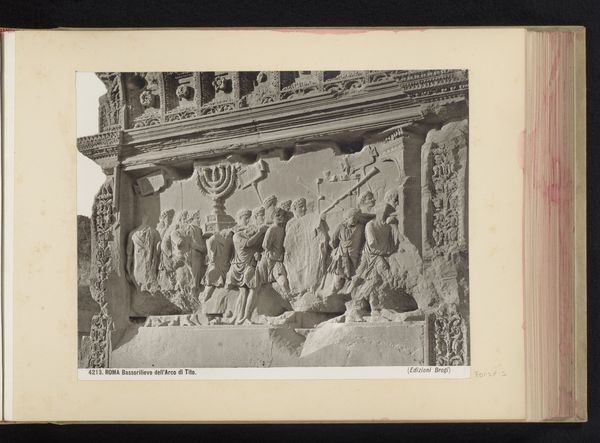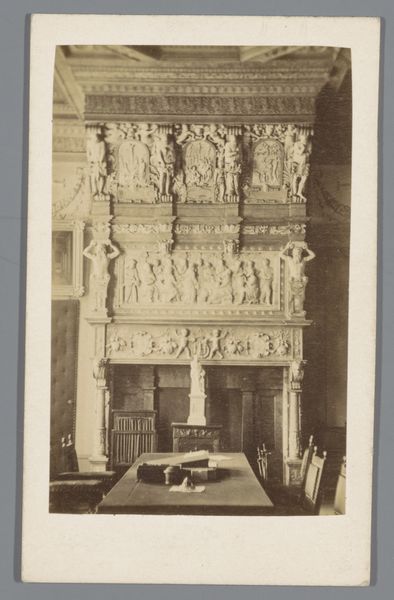
relief, photography, sculpture, gelatin-silver-print
#
relief
#
photography
#
ancient-mediterranean
#
sculpture
#
gelatin-silver-print
#
history-painting
Dimensions: height 238 mm, width 331 mm, thickness 0.08 mm
Copyright: Rijks Museum: Open Domain
Curator: This is Charles Nègre's photograph, "Bas-relief aan de kerk van Saint-Gilles-du-Gard," taken in 1852. It's a gelatin-silver print. Editor: Immediately, the textures catch my eye. The play of light and shadow across the carved stone is palpable, almost as if I could reach out and touch it. What strikes you most about its materiality? Curator: Well, Nègre’s choice of subject is significant. He’s documenting, almost archiving, this Romanesque sculpture at a time of immense social and political change in France. It speaks to the institutional role of photography emerging, right? Capturing and preserving cultural heritage. Editor: Absolutely. The act of photographing, transforming heavy stone into a portable image changes the way we consume it. The print itself, though, it has such presence. I’m interested in how this process democratized access, yet simultaneously created distance through reproduction. How do the processes change the impact? Curator: That's a compelling point. The original Romanesque sculpture at Saint-Gilles was, of course, part of a much larger architectural program, conveying specific religious and political messages. Here, in this contained photographic frame, does it serve a different purpose? Editor: I think so. While rooted in its historical moment, photography as a process also detaches the sculpture, allowing a different type of interaction that is very much affected by scale, transportation, and preservation of the materials used to create the photographic reproduction. Curator: Consider also how Nègre, like many early photographers, used this new technology to assert a sense of national identity. France, defining itself through its history and culture, as shown through photography in exhibitions and publications of the era. Editor: So, photography became a tool for cultural narrative. Curator: Exactly! A tool employed by institutions and individuals, shaping and reflecting the politics of imagery. The narrative of cultural worthiness is framed through photographic processes of capturing, re-presenting, and exhibiting historical artifacts. Editor: It makes you question who gets to participate in creating, preserving, and exhibiting our material world and cultural stories, and why. Curator: Precisely. And Nègre's image reminds us of that ongoing negotiation.
Comments
No comments
Be the first to comment and join the conversation on the ultimate creative platform.

